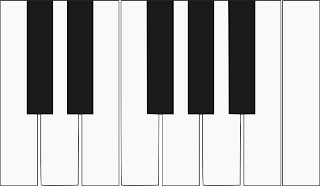SCALES
What Is A Scale?
The simple answer: Scales are a set of notes in an Octave, that are constructed based on a certain pattern.
Now for some more detail...
A scale is a sequence of preferred notes/tones.
In music theory, a scale is any set of musical notes ordered by fundamental frequency or pitch. A scale ordered by increasing pitch is an ascending scale, and a scale ordered by decreasing pitch is a descending scale. - Wikipedia
Scales are man-made. They can be created on any note, and there are thousands of scales and thousands of preferences on how to get from one note to the next note.
This is why music in the West sounds different from music in the East; they have different preferred scales.
You do not have to stick to a certain scale, but there are important scales to remember that are commonly used:
- The Major Scale
- The Minor Scale
- The Blues Scale
- The Natural Minor Scale
- The Pentatonic Scales in Major and Minor
- The Harmonic Scales in Major and Minor
- The Melodic Scale
- The Dorian Scale
- The Mixolydian Scale
Octave
What is an octave?
An octave is a range of notes.
So, to understand this better, let's go back to basics real quick.
Sounds - Vibrating air
- Fast vibrations = High sound ~ Like a bird tweeting.
- Slow vibrations = Low Sound ~ Like a tiger roaring.
Now, there are pitches between the fast and slow vibrations that sound similar, even though they are quite far away from each other in terms of pitch. When put together they not only mesh well, but sound clear and clean.
What the early musicians noticed about this was that the notes that had similar characteristics were a good way of splitting up the scale from low to high. For example; you start on a note and continue up or down until you hit a note that sounds similar to the first note that played.
Why?
- You get a similar sounding note every time you double the speed of whatever it is that is vibrating (notes).
Example: You have a sound of 110Hz - vibrating 110 times a second. If you increase (double) until 220Hz, and again until 440Hz (and so on), then you will notice distinctive similarities between all these notes.
In Western music these 3 speeds have a name: A
These connections are used to show you nice divisions within the range of pitches from low to high. These divisions from Low to High are called Octaves.
What is a Tempo?
- The speed at which a passage of music is played.
It is measured in BPM - Beats Per Minute.
Think of your Tempo like a heart rate. A beat is defined as rhythmic movement, the beat can also refer to the tempo.
Helpful links!









